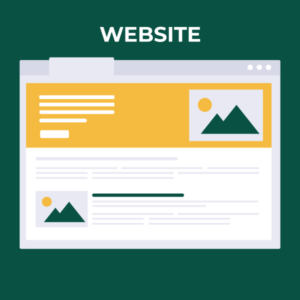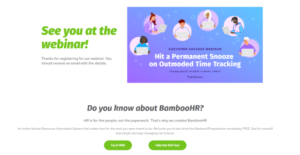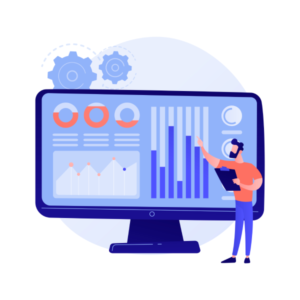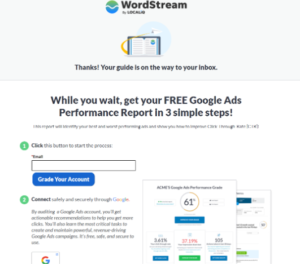When you are creating your eCommerce website, there are many components that you need to include to make sure your website looks professional. Your website should be helpful to new and existing customers, provide accurate product information, and be easy to navigate and make purchases.
Additionally, your website should promote the highest level of customer satisfaction to help build brand loyalty. This means besides your eCommerce site having an informative landing page, accurate product descriptions, and an easy checkout process, you should also include a sincere Thank You page.
The Thank You page is an essential page on any website. On the most basic level, the purpose of a Thank You page is to acknowledge the time a new or existing customer has taken to support your brand and its products by making a purchase, filling out a contact form, joining a mailing list, or referring friends and relatives to your site.
On a more advanced level, Thank You pages can also include incentives like discounts on future purchases, referral bonuses, and other rewards for sharing their purchase on social media or writing a review.

However you would like to design and use your Thank You page is up to you, but the most important thing is that you have one. Expressions of gratitude and appreciation can significantly enhance customer satisfaction and build brand loyalty.
Let us discuss in more detail what exactly a Thank You page is, what kind of information should be displayed on it, and what some of the goals of a Thank You page could look like.
What is a Thank You page in eCommerce?
As discussed previously, a Thank You page is an essential page on any website that acknowledges the time a customer has taken to support your brand and its products, confirming to the user at the same time that the transaction has been concluded. Thank You pages can also serve multiple purposes, such as encouraging future purchases with special discounts, offering referral bonuses, or providing additional resources for customers who need continued support.
According to a recent study, 86% of customers stated that they would remain loyal to a business that continues to provide support after an initial purchase. The benefits of using customer onboarding software are designed to help customer success teams transition potential leads to active customers by providing a centralized hub for onboarding documentation. By using this software, customer success employees can easily follow the onboarding process, which is important for retention and providing a positive customer experience.
This ongoing support can help new customers feel appreciated and that if they need anything in the future, they can trust that your brand will deliver the support they need. This alone can go a long way to building brand loyalty.
Now that we know what a Thank You page is and how it can serve many purposes, what are some of the main goals of a Thank You age?
Here are some examples of goals that you may want to keep in mind as you create your Thank You page for your eCommerce store.
Drive Engagement/build loyalty
Apart from confirming the successful purchase to a user, the main goal of a Thank You page is to drive engagement and build brand loyalty. Customer engagement is critical for an eCommerce business to build loyalty. The fact is, people love the individual attention and having the feeling that their purchases matter. That they are more than a number.
Here are some of the best ways an eCommerce website can increase customer engagement.
- Enable customer feedback and reviews.
- Reward customer feedback and reviews.
- Provide information about products and services, such as a FAQ section, live chat feature, and buyer guides.
- Immediately address unhappy customers and their concerns.
- Offer loyalty programs.
- Utilize social media to engage customers.
Some of these types of customer engagements can appear on the Thank You page after purchase. For example, encourage customers to leave a review, provide feedback, or share their experiences on social media and reward them for their effort with a free gift or special discount on a future purchase.
Another way a Thank You page can help drive engagement and brand loyalty is by working with a charity or non-profit to contribute some of the proceeds of each sale to support socially responsible causes. Then, when a customer arrives at the Thank You page, you can provide more information about the reasons your product or service supports, how much of the sale goes directly to them, and where the customer can obtain additional information about the causes and how they can provide additional support.

A Thank You page should not only have goals to help future growth, but it should also sincerely say thank you in a way that is authentic, heartfelt, and, if possible, personalized.
In addition to saying thank you, you may want to include a small thank you gift. For example, let’s say your eCommerce business sells an interior leather vehicle cleaning product. Once the purchase has been made, on the Thank You page, you could include a free guide on how to clean leather car seats using your product or a discount on microfiber cloths or other cleaning accessories that a customer could use with your product.
A thank you gift is a great way to not only say thank you but to show customers that you genuinely appreciate their business.
How Thank You pages can bring more added-value
Aside from engaging customers, building brand loyalty, and saying thank you, a Thank You page can serve several additional purposes.
A thank you page could include any one or several of the following.
- Call to action (CTA): A call to action is important to include on your Thank You page. You could ask customers to share on social media, refer a friend, claim a discount, leave a review, or download a guide. If you are running a subscription-based service, you could ask a customer to subscribe for an extended period at a discounted rate.
- Pitch cross-sell and up-sell: A common tactic is to provide cross-sells and upsells at a discounted price on the Thank You page. This could encourage immediate additional sales or plant a seed in the customer’s head for a future sale.
Conduct a survey: Customer surveys are essential for obtaining qualitative data that can be used to make future decisions about products and services, customer experience, pricing, and more. Qualitative data is extremely important for success as an eCommerce site, and often, it is much harder to obtain qualitative data compared to quantitative data like sales, trends, and business performance.
Metrics to analyze before launching your Thank You page
Before launching your Thank You page, it is important to consider certain metrics to ensure its effectiveness. Analyzing the following metrics can help you optimize your Thank You page to maximize its impact and improve your customer experience.
- Clarity: Make sure the messaging on your Thank You page is clear, concise, and consistent with your brand messaging across all platforms.
- Next steps: Let the customer know what the next steps are, such as when they can expect the order to be delivered or ready for pickup, how to contact you with any questions or concerns, and a call-to-action.
- Creativity: Do not be generic. Be creative and authentic, and ensure your customers know they are appreciated. Personalization can go a long way to helping your Thank You page be more authentic.
- Level of appreciation: Emphasize your gratitude to your customer by offering a free thank-you gift or a coupon code for their next purchase.

The anatomy of your Thank you page
- Order confirmation messaging: A message that lets a customer know that their order has been finalized and confirmed that the order will be processed for the customer to receive it in the shortest time possible.
- Order number: Every order should have an order number to quickly identify if the customer needs to change or have questions or concerns about their specific order.
- Tracking number (if applicable): If you are shipping a product, you will want to provide a tracking number and a link to the shipping service provider’s tracking system. This can inform customers where their purchases are and when they can expect them to arrive.
- Ordered item(s): A detailed list of each item in the order, including their prices.
- Order amount: The total money the customer will be charged.
- Delivery or pickup details (if applicable): Estimated delivery time with the tracking number or detailed instructions of when and where the order will be ready for pickup.
- Contact and/or support information: All the necessary information a customer needs to contact you and your customer service team if they have any questions or concerns or if they need assistance once they have received their order.
- What’s next (CTA): As mentioned previously, a Thank You page is an excellent place to have a call-to-action that can further engage your customers and build brand loyalty. Additionally, a CTA could help turn satisfied customers into brand ambassadors on your behalf.
Here are some examples of effective calls to action.
- Leave a review
- Share their purchase and experience on social media
- Claim a special discount
- Refer a friend or family member
- Extend a subscription for a longer period of time at a discounted price
- Download a free buyer’s guide
- Donate to a social cause
- Join a mailing list
Additional goals for an eCommerce site beyond the Thank You page
As previously mentioned, the Thank You page is significant for driving engagement and creating brand advocates who will support your company and its products and services for years to come. Aside from using the Thank You page to stimulate customer engagement, there are a few goals you may want to consider for your eCommerce site that can provide further customer engagement.
Optimize the site for micro conversions
Macro conversions are the main goal of your website. For many eCommerce sites, the macro goal is simply selling a product or service or having a new customer sign up for your subscription services. However, micro-conversions are necessary to consider as well. A micro conversion is any step a potential customer takes to display interest in your brand, product, and/or services. Micro conversions are essential building blocks that may lead to increased macro conversions and brand awareness in the long run.
Here are some examples of how you could add some micro-conversion opportunities to your website.
- Create a mailing list for email newsletters
- Include a comment section on all your blogs
- Allow for sharing of all useful and informative content about your products and services, including blogs, buyer’s guides, testimonials, and reviews.
- Offer a free downloadable eBook.
- Have users create an account and offer access to exclusive discounts and special events.
- Offer entertaining and informative video content.
- Create a wishlist feature that allows customers to save products and services they would like to purchase in the future.
Boost engagement by design
With UX and UI design, you can boost customer engagement significantly and almost subconsciously. A website that is incredibly easy to navigate and full of helpful content is a great way to keep users engaged with your site and explore its many features.
Some of the best ways to boost engagement by design include the following.
- Streamlining the user experience
- Improving mobile responsiveness
- Understanding your target audience
- Allowing users to create accounts that give them access to exclusive content and discounts
- Highlighting and emphasizing user testimonials
- Using AI to personalize the user experience
- Personalized content recommendations
- Personalized product and service recommendations
- Add strategic call to actions
- Integrate a live chat or chatbot feature

Keep metrics in focus at all times
Using eCommerce software to monitor metrics for your website is one of the main keys to success. The quantitative data acquired when customers interact with your site can be analyzed to help make future decisions about the UX and UI, what kinds of products and services you offer, and more.
If you use eCommerce software like Shopify, these types of software will often accumulate data and display vital information about the most essential metrics in an easy-to-understand and comprehensive dashboard. If you do not use eCommerce software that does this, then at a minimum, you should be monitoring your Google Analytics data.
So what are the most essential eCommerce metrics you should be monitoring at all times?
Here are some of the most important metrics to focus on as you make future decisions about your website.
- Sales conversion rate
- Average order value
- Customer lifetime value
- Customer acquisition costs
- Shopping cart abandonment rate
- Returning customer rate
- Bounce rate
- Net promotor score
- Click-through rate
- Store sessions by traffic source (search, direct, social, email)
- Store sessions by device type
- Store sessions by location
- Top products by units sold
- Month-end inventory snapshot
- Average inventory sold per day
It’s time to nail your Thank You page!
The main idea of a Thank You page is to keep your customer in focus and to make them feel appreciated for spending the time to make a purchase, sign up for a mailing list, share blog content, leave a review, or do anything that could be considered a macro or micro conversion. Every little bit helps when you are working to increase brand awareness, brand loyalty, and customer engagement.
Remember that although the underlying goals of the Thank You page may be for future gain, it is absolutely critical that you actually say thank you to your customers in a way that is authentic, heartfelt, and, if possible, personalized.






